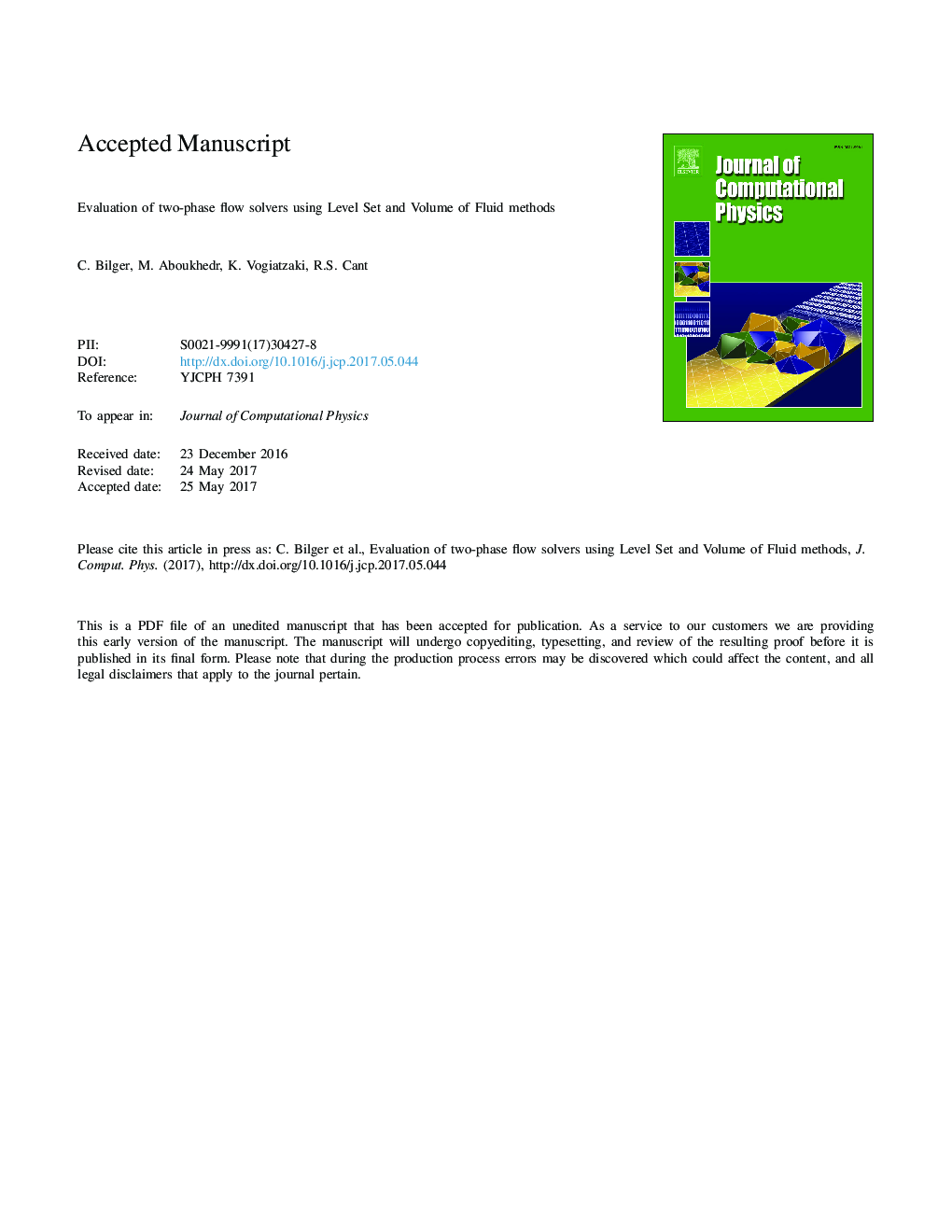| Article ID | Journal | Published Year | Pages | File Type |
|---|---|---|---|---|
| 4967425 | Journal of Computational Physics | 2017 | 34 Pages |
Abstract
Two principal methods have been used to simulate the evolution of two-phase immiscible flows of liquid and gas separated by an interface. These are the Level-Set (LS) method and the Volume of Fluid (VoF) method. Both methods attempt to represent the very sharp interface between the phases and to deal with the large jumps in physical properties associated with it. Both methods have their own strengths and weaknesses. For example, the VoF method is known to be prone to excessive numerical diffusion, while the basic LS method has some difficulty in conserving mass. Major progress has been made in remedying these deficiencies, and both methods have now reached a high level of physical accuracy. Nevertheless, there remains an issue, in that each of these methods has been developed by different research groups, using different codes and most importantly the implementations have been fine tuned to tackle different applications. Thus, it remains unclear what are the remaining advantages and drawbacks of each method relative to the other, and what might be the optimal way to unify them. In this paper, we address this gap by performing a direct comparison of two current state-of-the-art variations of these methods (LS: RCLSFoam and VoF: interPore) and implemented in the same code (OpenFoam). We subject both methods to a pair of benchmark test cases while using the same numerical meshes to examine a) the accuracy of curvature representation, b) the effect of tuning parameters, c) the ability to minimise spurious velocities and d) the ability to tackle fluids with very different densities. For each method, one of the test cases is chosen to be fairly benign while the other test case is expected to present a greater challenge. The results indicate that both methods can be made to work well on both test cases, while displaying different sensitivity to the relevant parameters.
Keywords
Related Topics
Physical Sciences and Engineering
Computer Science
Computer Science Applications
Authors
C. Bilger, M. Aboukhedr, K. Vogiatzaki, R.S. Cant,
